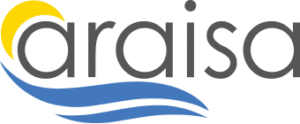The Innovating for Impact (I2) project led to two innovative prototype projects and a self-paced online course about applying social research and development in the settlement sector. Funded by IRCC and launched by ARAISA and Inspiring Communities, the goal of this two-year capacity-building program was to help settlement agencies in the Atlantic Region increase newcomers’ sense of belonging and incorporate new tools and approaches to their work.

Project Overview
4 Layers of Impact
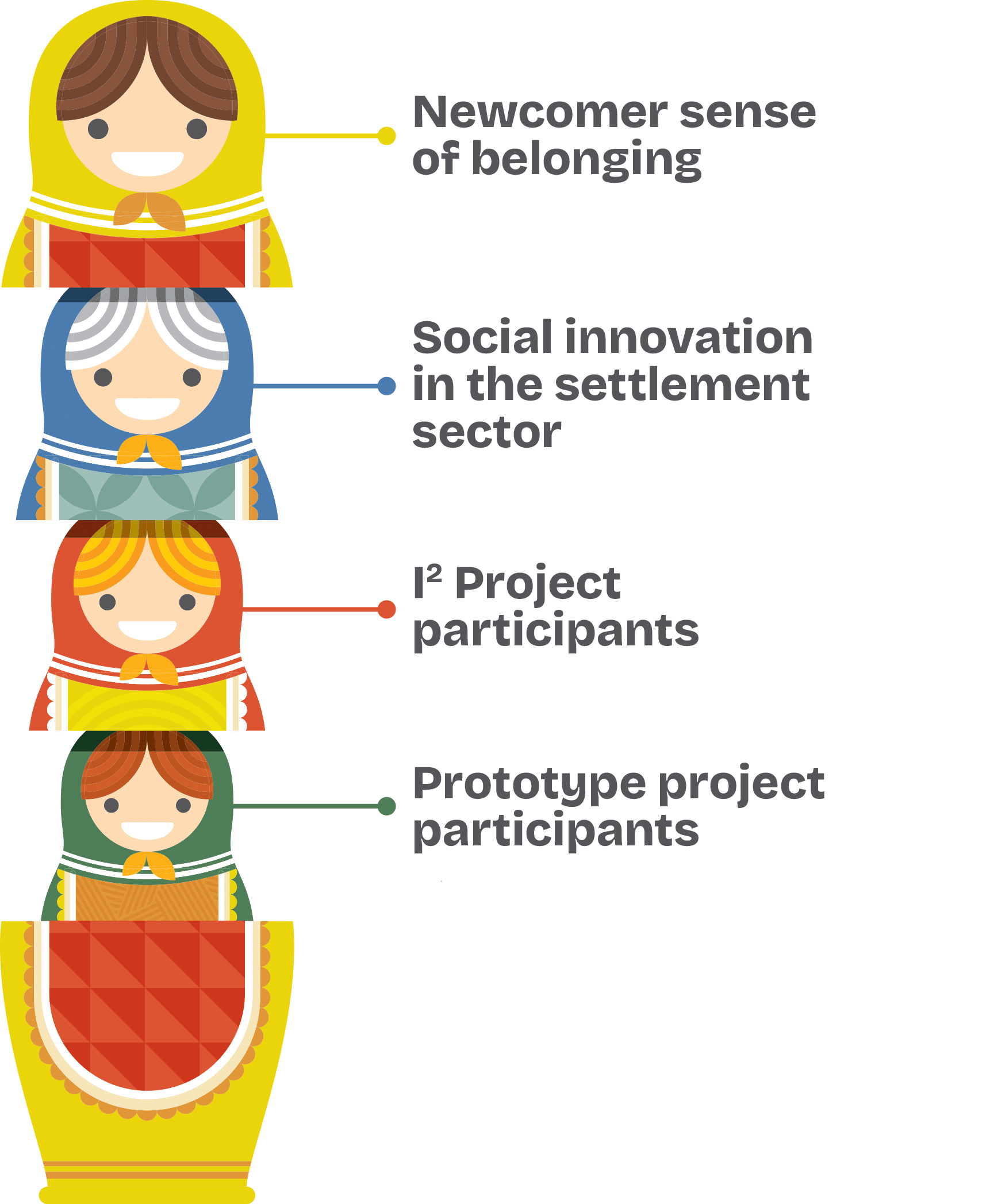
Self-Paced Course
The Innovating for Impact (I2) Course is a self-paced course for those who wish to learn more about applying social R&D to their work in the settlement sector. The course covers the same core topics that I2 participants covered during the project.
Module 1: Enhancing Newcomers’ Sense of Belonging
Module 2: Social Research & Development and I2
Module 3: Human-Centered Design Process
Module 4: Ethics in Research
Module 5: Project Idea Analysis
Module 6: Intersectionality and GBA Plus
Module 7: Environmental Scan
Module 8: Project Management Basics
Module 9: Evaluation
Module 10: Putting it Together
To complete the course and receive your certificate of completion, click here.
Core Concepts of Social R&D
I2 Project participants learned about Social Research and Development (Social R&D), Evaluation, and Outcomes Measurement using Human-Centered Design.
Human-Centered Design involves brainstorming, rapid prototyping, sharing ideas with those you’re designing for, and launching your idea.
Watch this video to learn more about Human Centered Design:
The Human- Centred Process
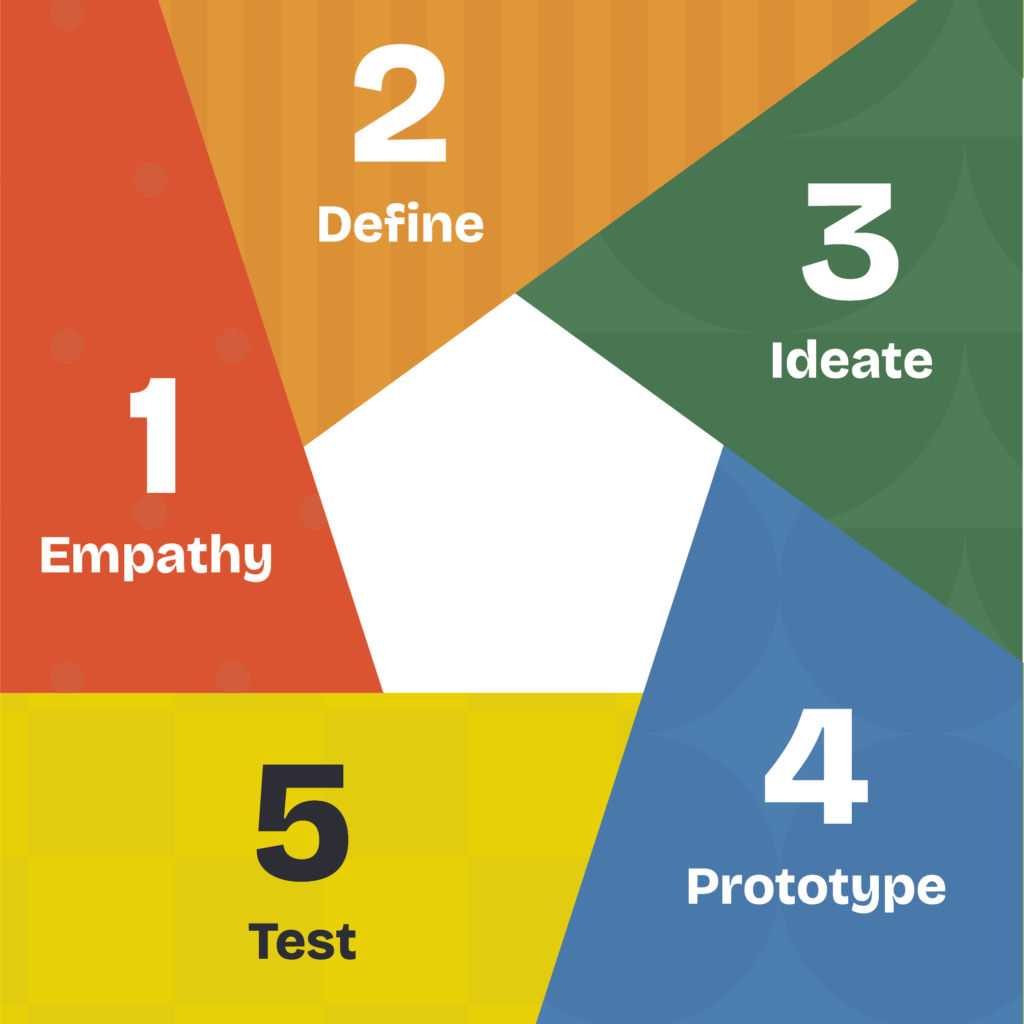
1. Empathy
• Stories
• Ethnographic Research
• Sense Making
• System mapping
2. Define
• Making sense of needs and insights from stories
• “How Might We” Questions
3. Ideate
• Brainstorming
• Getting ideas from other fields
• Co-designing with community
• Building on ideas of others
4. Prototype
• Choosing ideas that could meet needs
• Making prototypes of what a service, policy innovation could look like
5. Test
• Checking the prototypes with community/with user groups the prototypes are for
Credit: Tamarack Institute
Prototype Projects
Two prototype projects were implemented as part of the I2 project.
The project “Imagine ta communauté” was developed by the Conseil pour le développement de l’alphabétisme et des compétences des adultes du Nouveau-Brunswick (CODAC NB) and the Réseau en immigration francophone du Nouveau-Brunswick (RIF NB) under the team name “Acadie Inclusive”. This project sought to address low retention among Francophone newcomers in New Brunswick by improving their sense of belonging. The project also sought to better understand immigration in New Brunswick, including the experiences in rural versus urban settings, and experiences of systemic racism.
The Multicultural Association of Fredericton (MCAF) leveraged the technological skills of newcomers to develop “Bubbles”, a centralized platform for use by newcomers, volunteers, and settlement organizations. Bubbles is an online platform that features news, e-learning, volunteering and other resources, with the intent of fostering community connections and increasing the sense of belonging among newcomers in Fredericton.
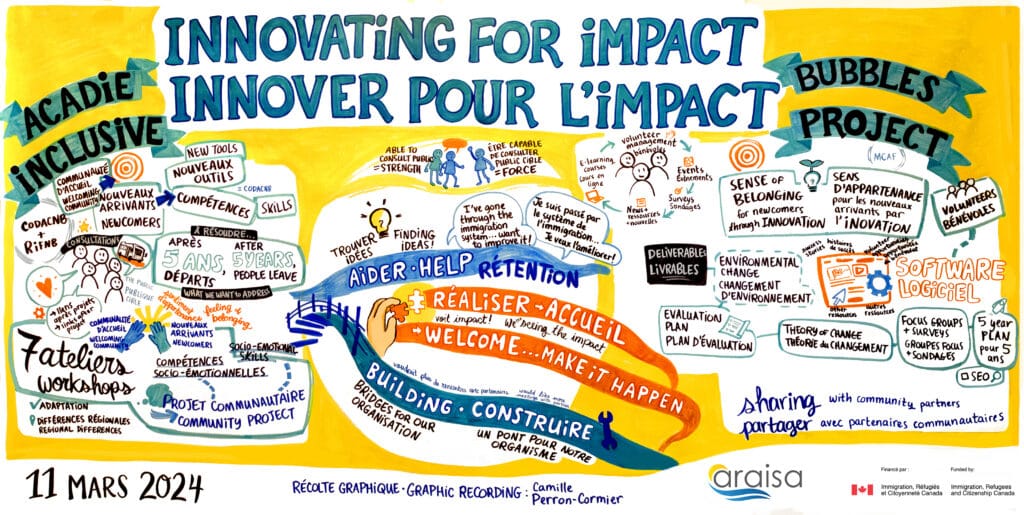
Project Outcomes
Outcome #1
The project increased Social R&D capacity among participating organizations.

37% of Cohort 1 participants indicated they had a high degree of knowledge about Social R&D at the start of the project; at the endpoint, this increased to 65%.
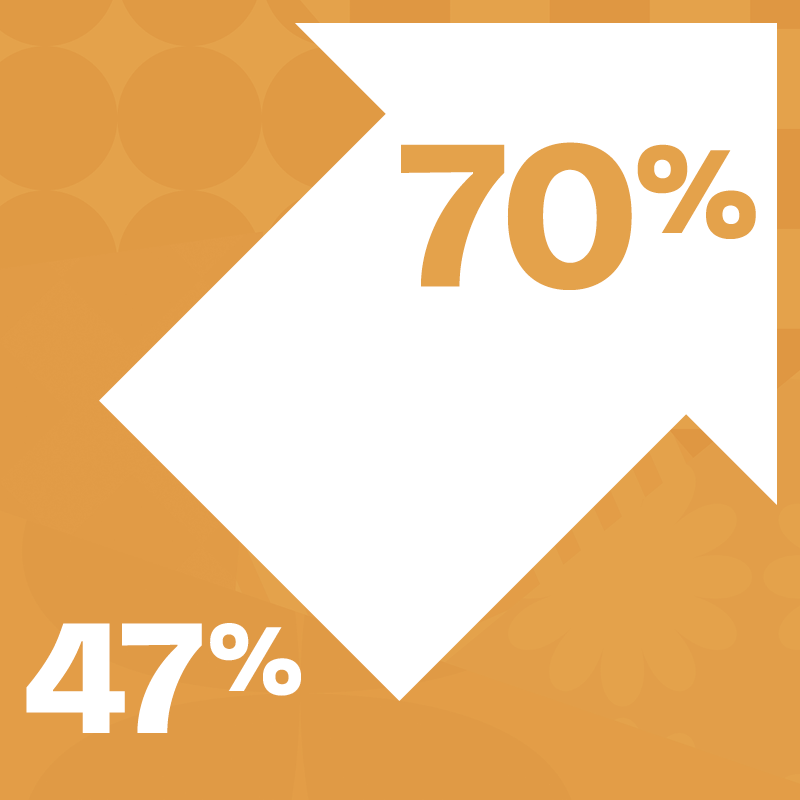
47% of Cohort 1 participants initially indicated they had the skills to engage with Social R&D; 70% indicated this was the case by the end of the project.
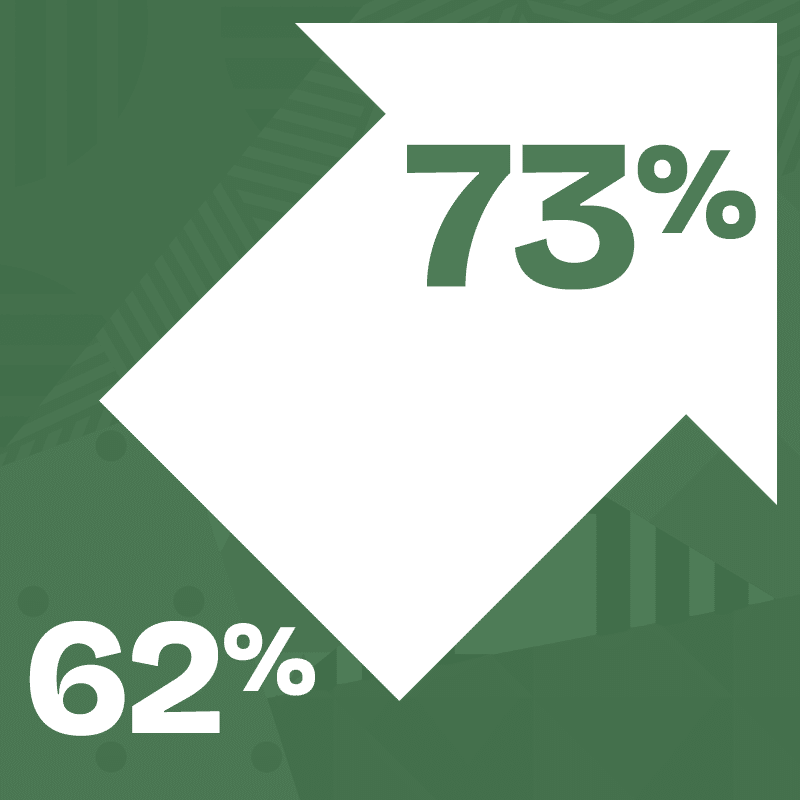
62% of Cohort 2 participants initially indicated they had the skills to engage with Social R&D; 73% indicated this was the case at the end of the project.
Outcome #2
The project increased the capacity of participating organizations to carry out evaluation and outcome measurement.

62% of Cohort 2 participants indicated they had a high degree of understanding of outcome measures before the training; by the end of the project, this number rose to 73%.
Final Project Report
A wrap-up meeting for the I2 project was held on March 11, 2024, in Halifax, NS. The meeting brought together a small number of cohort one and two participants to discuss the successes and challenges of the project. To read the final meeting report, click here.
